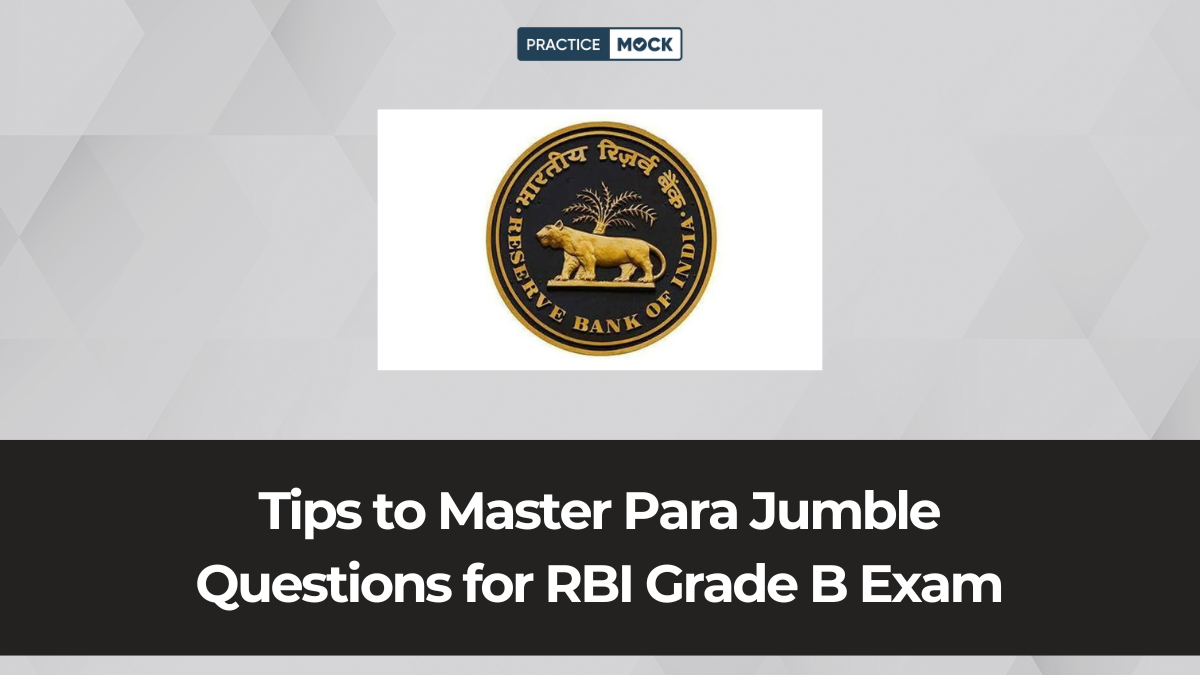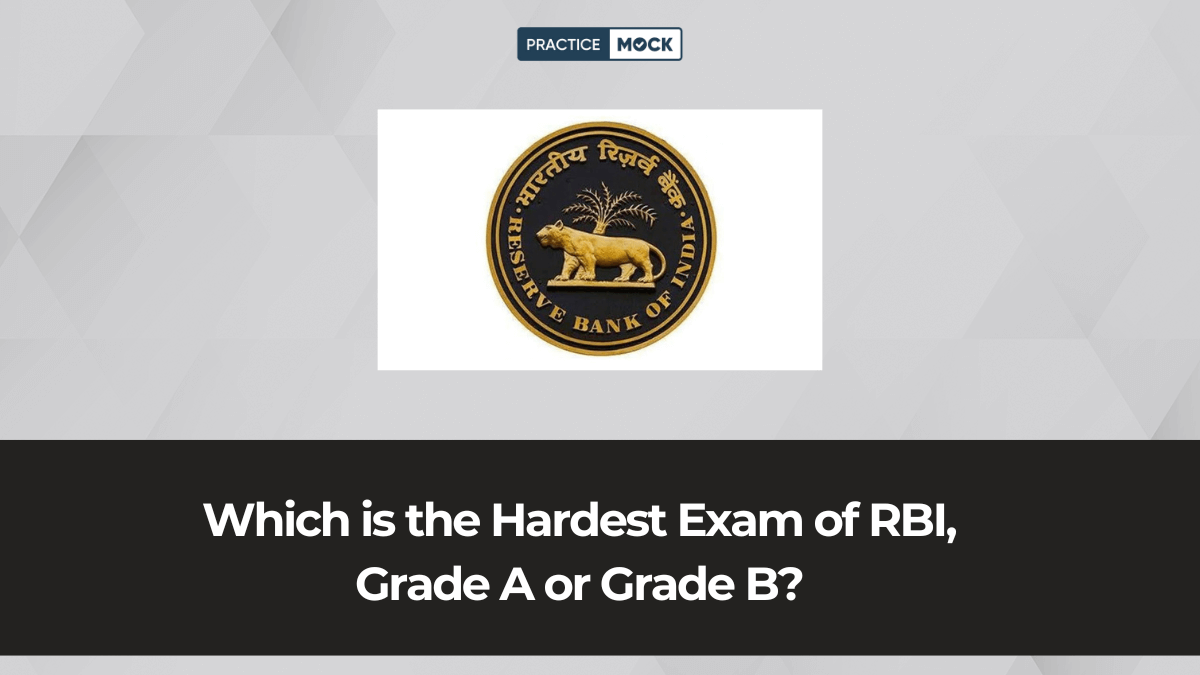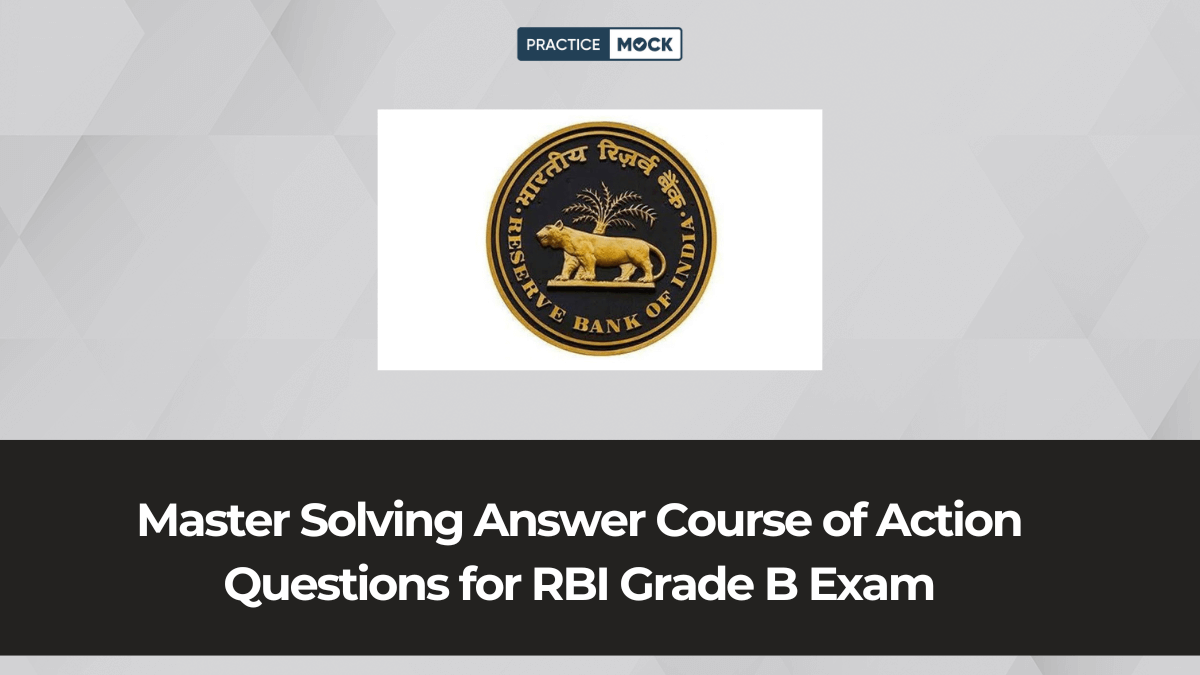Tips to Master Para Jumble Questions for RBI Grade B Exam


In the RBI Grade B Exam, the Para Jumble questions appear in the Reasoning Ability section during Phase 1. This section plays a vital role in deciding a candidate’s overall score. Para Jumble questions test a candidate’s ability to analyze and organize sentences in a clear and organized order. Mastering this section can significantly boost your chances of scoring higher. In this blog, we will provide you with useful and practical tips and strategies to help you master the art of answering Para Jumble questions. And what’s more! You’ll also get important practice questions to sharpen your skills.
Important Para Jumble Questions with Solutions
Para Jumble questions in the RBI Grade B exam consist of a set of sentences. These sentences must be arranged in a correct order to form a meaningful paragraph. To solve these questions, you must identify the logical flow of sentences. Here’s a breakdown of how to approach them:
In the question given below, a set of sentences is given, which when properly sequenced, form a coherent paragraph. Arrange the sentences in the correct sequence, and answer the questions that follow.
P. They conducted oral history interviews with autistic adults born before 1975 — thus growing up before the condition was widely known — and diagnosed when over the age of 35.
Q. Lilley and colleagues were interested in how the participants’ sense of their own identity has changed over time, and how receiving a diagnosis may have impacted this.
R. In _________ with the increasing popularity of autobiographical writing by autistic people, these have served to complement more traditional research by adding nuance and detail to understandings of the condition.
S. A key development in autism research in the last twenty-odd years has been the use of less rigid methods such as interviews, fieldwork, and surveys, instead of those based on standardised measurements or other “laboratory-based” tasks.
T. A team from Australia led by Rozanna Lilley has now used such an approach with a population underrepresented in autism research, namely late-diagnosed adults.
Which of the following words will fit the blank in P?
a) parley
b) purge
c) puissant
d) tandem
e) totem
Ans: (d)
Solution: We need a noun to form the object of the preposition IN. The sentence tells us how, together with the increasing popularity of writing by autistic people, these have complemented traditional research. TANDEM will fit here and complete the phrase IN TANDEM, which means ‘alongside with something’. Thus, (d) is the right answer.
Parley – a discussion between two groups of people in order to end an argument. Purge – an abrupt or violent removal. Puissant (adjective) – having great power. Totem – symbol.
Which of the following statements will be the SECOND after rearrangement?
a) S
b) Q
c) T
d) P
e) R
Ans: (e)
Solution: SRTPQ is the final order. S begins the passage by establishing the surrounding context. It tells us how, in the last 20 years, the use of less rigid methods have become prominent instead of “laboratory-based” tasks. R follows by telling us how, in addition to popularising autobiographical writing by autistic people, these less rigid methods mentioned in the previous sentence have complemented traditional research. T follows by telling us how a team led by Rozanna Lilley is using such methods on late-diagnosed adults. P follows by telling us what was done: they conducted oral history interviews with autistic adults born before 1975 who were diagnosed when they were over the age of 35. Q follows by referring to the participants mentioned in the previous sentence and ends the passage by telling us how they were interested in the changes in the participants’ sense of their own identity over time. Thus, (e) is the right answer.
Which of the following statements will be the THIRD after rearrangement?
a) S
b) Q
c) T
d) P
e) R
Ans: (c)
Solution: SRTPQ is the final order. S begins the passage by establishing the surrounding context. It tells us how, in the last 20 years, the use of less rigid methods have become prominent instead of “laboratory-based” tasks. R follows by telling us how, in addition to popularising autobiographical writing by autistic people, these less rigid methods mentioned in the previous sentence have complemented traditional research. T follows by telling us how a team led by Rozanna Lilley is using such methods on late-diagnosed adults. P follows by telling us what was done: they conducted oral history interviews with autistic adults born before 1975 who were diagnosed when they were over the age of 35. Q follows by referring to the participants mentioned in the previous sentence and ends the passage by telling us how they were interested in the changes in the participants’ sense of their own identity over time. Thus, (c) is the right answer.
Which of the following statements will be the FOURTH after rearrangement?
a) S
b) Q
c) T
d) P
e) R
Ans: (d)
Solution: SRTPQ is the final order. S begins the passage by establishing the surrounding context. It tells us how, in the last 20 years, the use of less rigid methods have become prominent instead of “laboratory-based” tasks. R follows by telling us how, in addition to popularising autobiographical writing by autistic people, these less rigid methods mentioned in the previous sentence have complemented traditional research. T follows by telling us how a team led by Rozanna Lilley is using such methods on late-diagnosed adults. P follows by telling us what was done: they conducted oral history interviews with autistic adults born before 1975 who were diagnosed when they were over the age of 35. Q follows by referring to the participants mentioned in the previous sentence and ends the passage by telling us how they were interested in the changes in the participants’ sense of their own identity over time. Thus, (d) is the right answer.
Which of the following statements will be the FIFTH after rearrangement?
a) S
b) Q
c) T
d) P
e) R
Ans:
Solution: SRTPQ is the final order. S begins the passage by establishing the surrounding context. It tells us how, in the last 20 years, the use of less rigid methods have become prominent instead of “laboratory-based” tasks. R follows by telling us how, in addition to popularising autobiographical writing by autistic people, these less rigid methods mentioned in the previous sentence have complemented traditional research. T follows by telling us how a team led by Rozanna Lilley is using such methods on late-diagnosed adults. P follows by telling us what was done: they conducted oral history interviews with autistic adults born before 1975 who were diagnosed when they were over the age of 35. Q follows by referring to the participants mentioned in the previous sentence and ends the passage by telling us how they were interested in the changes in the participants’ sense of their own identity over time. Thus, (b) is the right answer.
Tips to Master Para Jumble Questions
To master Para Jumble questions in the RBI Grade B exam, it’s important to develop a strategy that helps you quickly identify the correct sequence of sentences. Let’s now throw some light on some effective tips that can practically guide you in improving your speed and accuracy.
Follow these tips to tackle Para Jumble questions with confidence!
1. Understand Sentence Structure
Understanding the structure of a sentence is key to solving Para Jumble questions. Break down each sentence into its subject, verb, and object. These elements will help you identify which sentences logically follow one another. Pay attention to grammatical structures like conjunctions and modifiers, as they guide the flow of thoughts. Knowing these patterns will help you place sentences in the correct order.
2. Look for Logical Connectors
Logical connectors such as “however”, “therefore”, “meanwhile”, and “in addition” often indicate how sentences are related to each other. These words or phrases link ideas, either contrasting, expanding, or concluding them. By identifying these connectors, you can often determine the relationship between sentences and use that knowledge to decide which sentence should come next.
3. Identify the First and Last Sentence
The first and last sentences usually have a specific role in the paragraph. The first sentence introduces the main idea or theme, while the last sentence wraps up the idea or offers a conclusion. Look for phrases like “to begin with,” “firstly,” or “in conclusion,” which are clear indicators. Placing these sentences correctly can help you organize the rest of the paragraph.
4. Eliminate Irrelevant Sentences
Not all sentences will fit logically into the sequence. Some may be completely off-topic or out of context. Carefully read through each sentence and ask yourself if it adds value to the theme. Look for sentences that are disjointed or introduce new topics abruptly. Eliminate these to avoid confusion and narrow down possible sequences, which will speed up your solving process.
5. Practice Regularly
Practice is essential to mastering Para Jumble questions. The more you practice, the better you will become at recognizing sentence relationships and patterns. Use a timer to simulate exam conditions, as this will help you build speed. Regular practice helps you become familiar with different types of Para Jumble questions, improving both your speed and accuracy, and ultimately boosting your overall score.
Takeaway
Mastering Para Jumble questions is important for scoring well in the RBI Grade B Exam, especially in the Reasoning section. By focusing on sentence structure, identifying logical connectors, and regularly practicing, you will enhance your ability to arrange sentences logically and coherently. Don’t forget to stay patient during your preparation. Do rigorous practice to build your confidence. Take advantage of our FREE RBI Grade B Phase 1 Mock Test to kickstart your preparation. This test is an excellent way to assess your strengths and weaknesses, ensuring you’re fully prepared for the real exam. Good luck!
Join our unique Telegram group immediately to skyrocket your preparation for Regulatory exams via expert guidance, top tips, perfect feedback, and much more!
[ Click Here to join the PracticeMock Telegram Group! ]
[ Click Here to join the PracticeMock Telegram Discussion Group Link! ]
Related Posts:
FAQs
Para Jumble questions require arranging a set of sentences into a coherent paragraph based on their logical flow.
The first sentence usually introduces the main idea or theme of the paragraph, often marked by phrases like “To begin with.”
Regular practice helps improve your speed and accuracy, enabling you to identify sentence relationships quickly during the exam.
Logical connectors like “however,” “therefore,” and “meanwhile” help identify how sentences are related and guide the correct sequence.
Look for sentences that don’t fit the theme or introduce unrelated ideas, and remove them to narrow down the sequence.
Recent Posts
1000+ Important Question for PNB SO 2025 Exam, Check Section Wise Question
Here we are providing the 1000+important questions for PNB SO 2025 Exam. Candidates can check…
500+ Most Probable GA Question PDF for SBI PO Mains 2025 Exam
Here we are providing the 500+ Most Probable GA Question PDF for SBI PO Mains…
Which is the Hardest Exam of RBI, Grade A or Grade B?
Wondering which RBI exam is tougher? Check out a comprehensive comparison of Grade A and…
TMB Admit Card 2025 Out, Download Call Letter
In this article we have discussed details about the release of the TMB Admit Card…
AAI ATC Recruitment 2025 Notification PDF Out, Apply Online
The AAI has released the AAI ATC Recruitment 2025 Notification on its official website to…
AAI ATC Apply Online 2025 Out, Link Provided To Application Form
The AAI has released the AAI ATC Apply Online 2025 form on their official website.…



